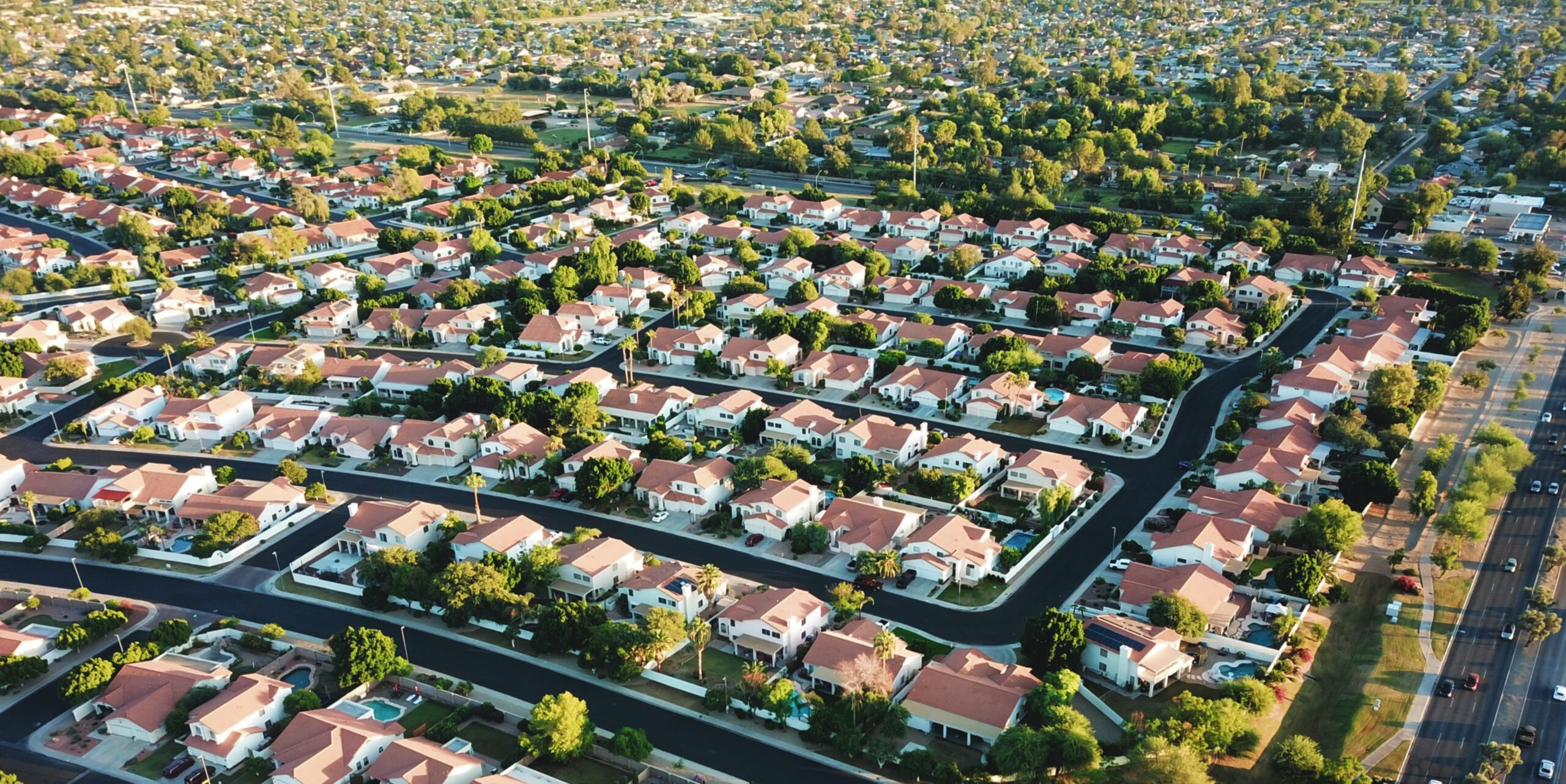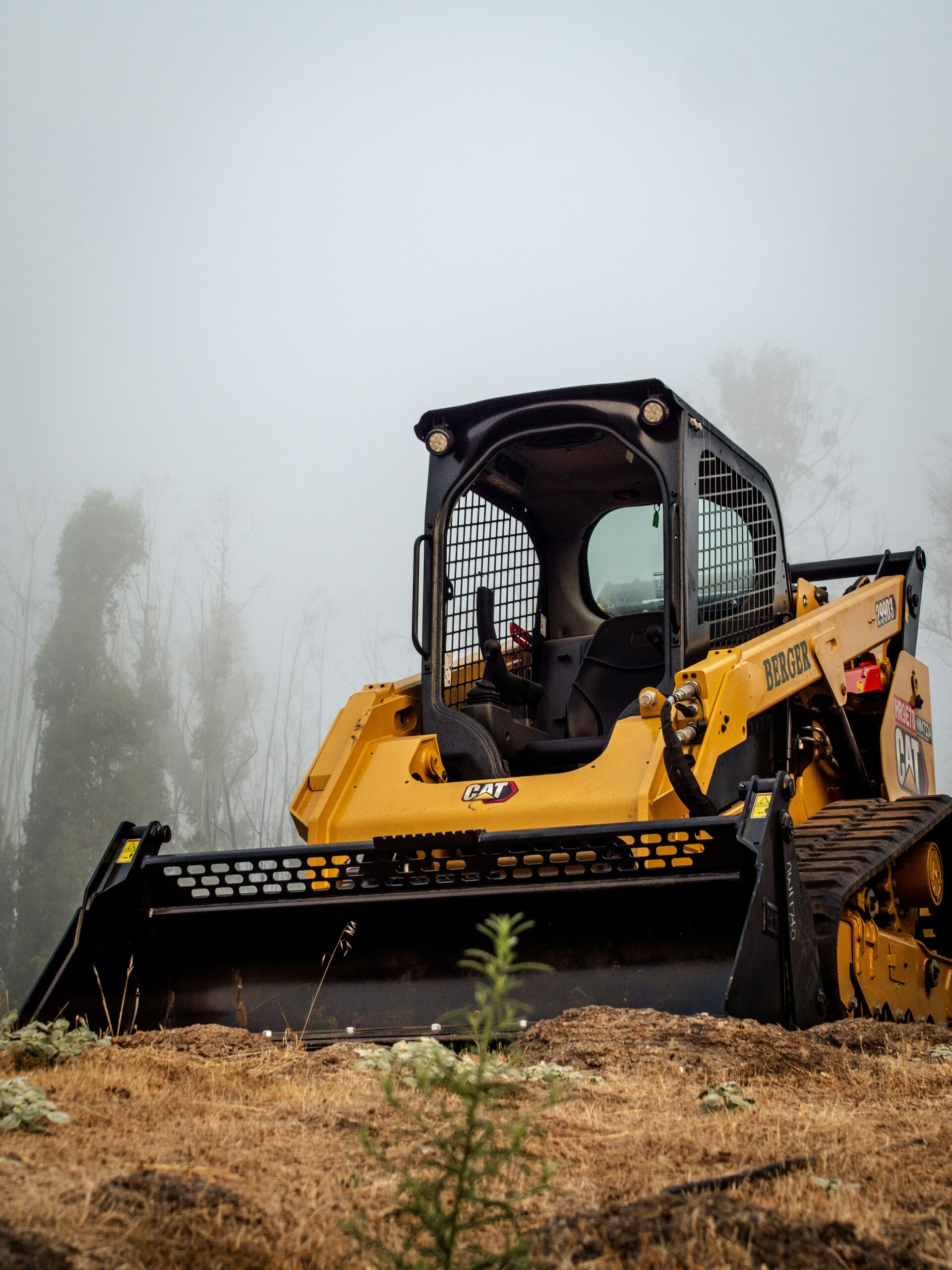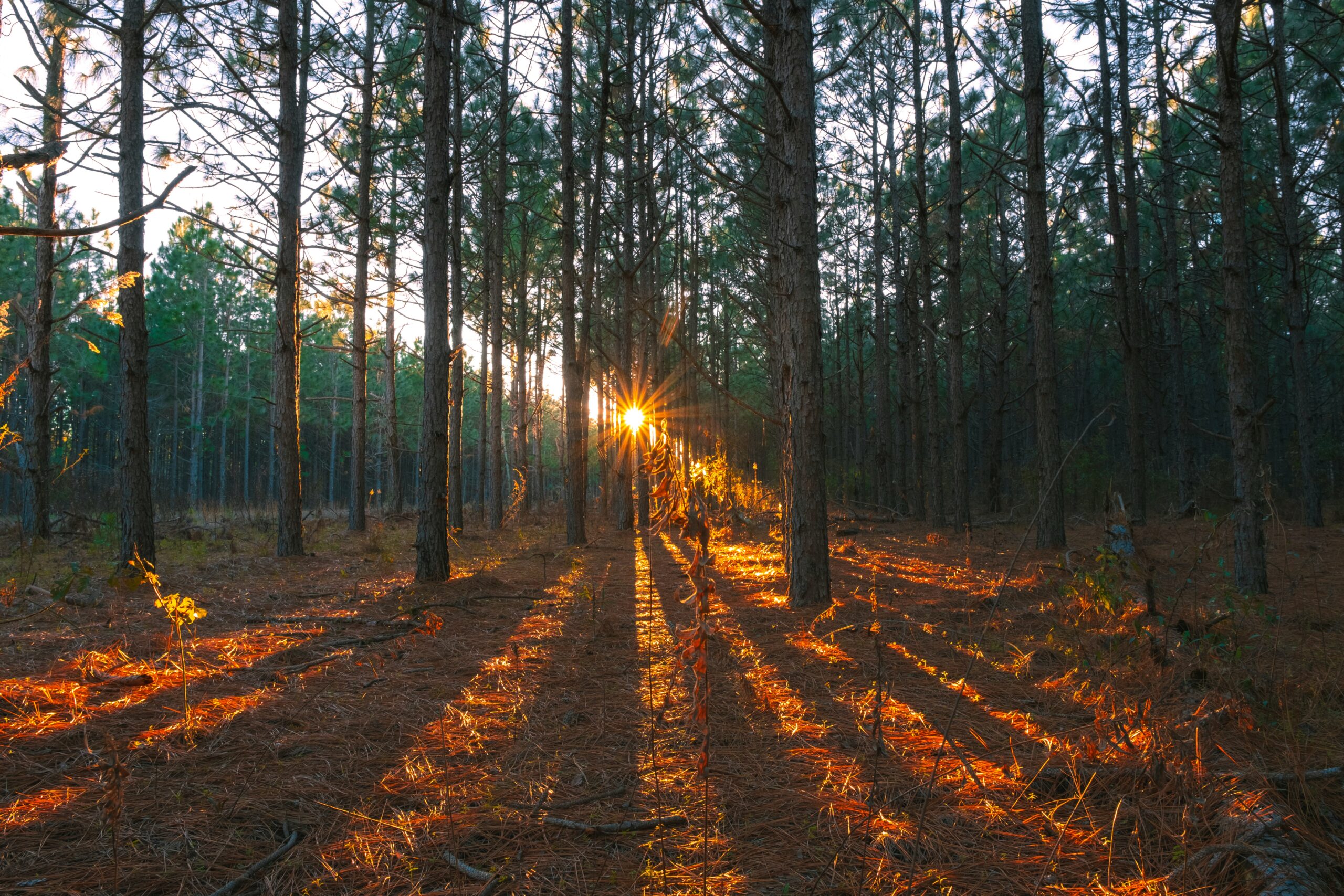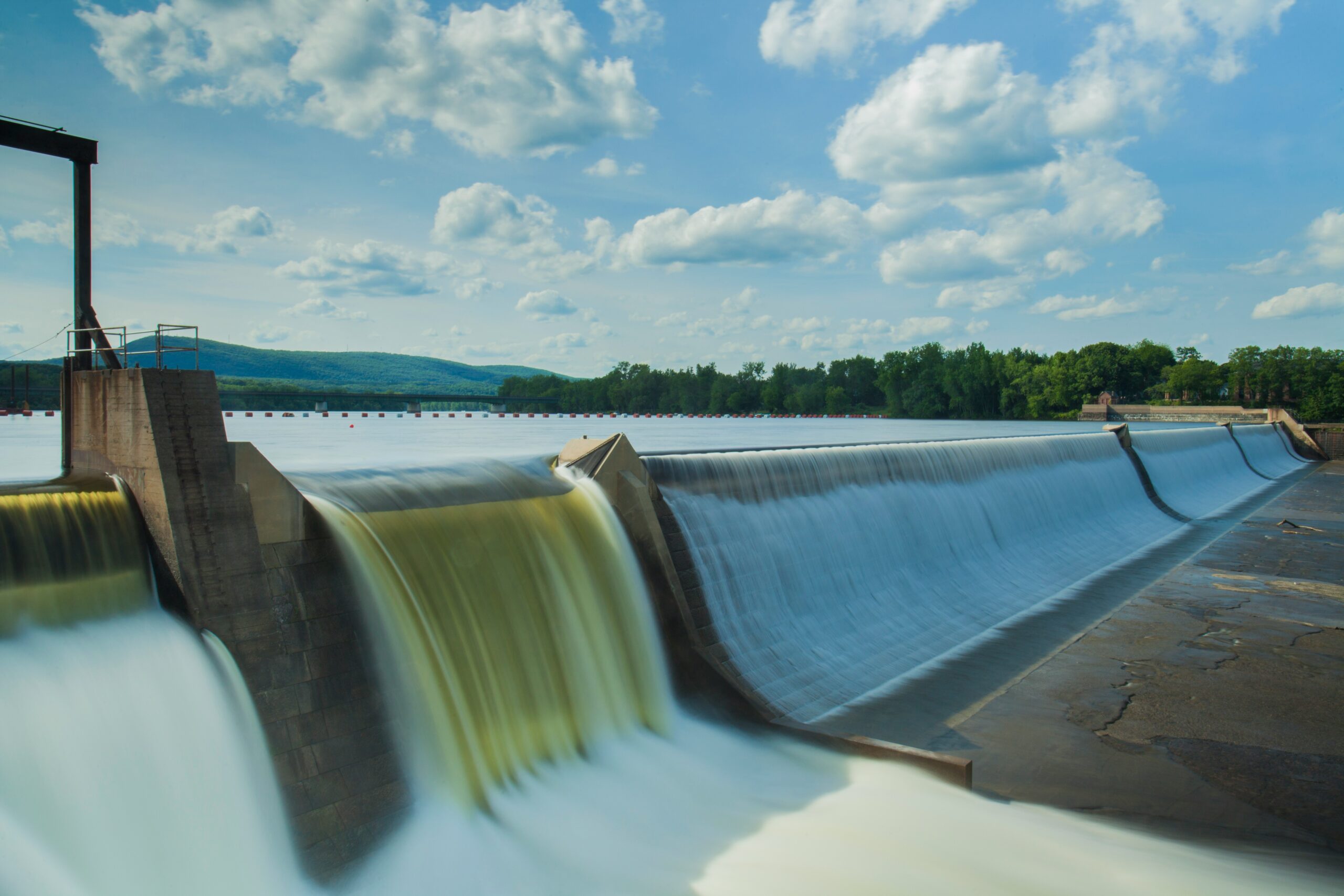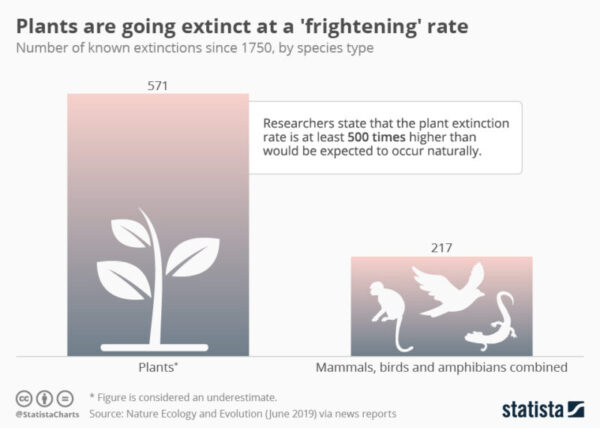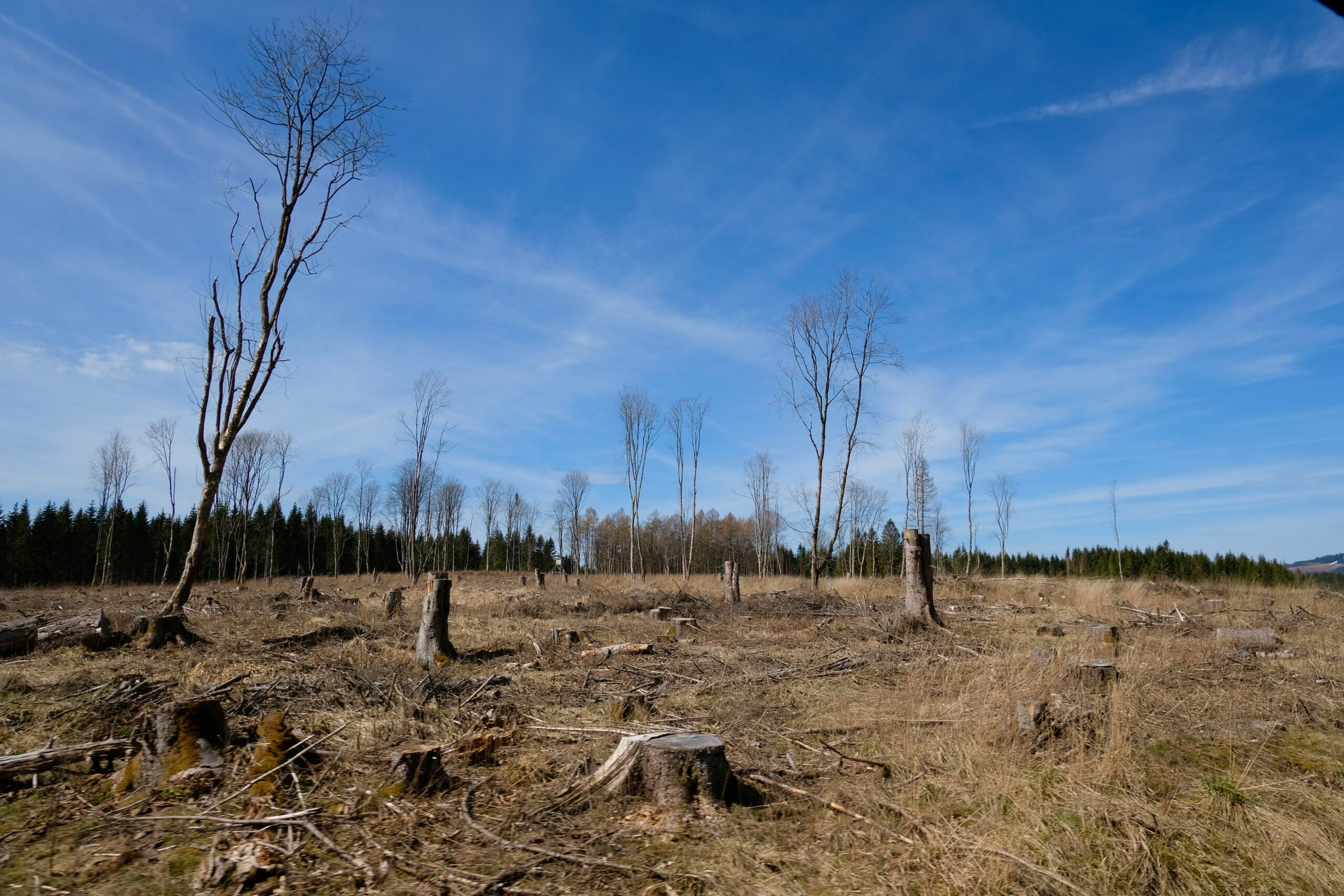Habitat Loss
Threats to Our Native Plants
Habitat Destruction
Habitat Destruction occurs when habitats simply go away due to conversion of natural habitats to agriculture, commercialization, urbanization, or similar events. When a neighborhood replaces an intact natural ecosystem, much is lost. Human activities generally compete with, and alter, natural habitats so it is difficult to pinpoint single causes. Once an area of habitat is destroyed, some of its animal residents may move into new habitats and change plant life there through browsing or other predation. (This is why deer are nibbling on hostas and bedding down under azaleas in urban areas across the state!) Deer have been known to alter natural succession by eating young native tree seedlings, and to destroy wildflowers and understory plants as they seek enough food to maintain ever-larger herds.
Habitat Degradation
Habitat Degradation occurs when species change, such as the replacement of longleaf pine savannas with pine monocultures, causing the forest to lose natural diversity. Though the forest may still appear to be just that – “a forest” – it is no longer in harmony and able to withstand destruction by new insects, pests, diseases, pollution (herbicide and pesticide runoff, mine drainage, air pollution, nearby urbanization) which can result in fire suppression, or climate change which can cause heat stress or alter habitat through more frequent flooding and droughts.
Habitat Fragmentation
Habitat Fragmentation occurs when highways, dams (or diversions in aquatic habitats), development, or other land use disrupt the intact ecosystem, making it harder for animals to move freely from one area to another. Habitat fragmentation can also affect plants by disrupting the dispersal of seed by wind or preventing birds and other animal seed dispersers from moving beyond a certain point.
“44% of global GDP in cities ($31 trillion) is estimated to be at risk of disruption from nature loss, and more than 1.4 billion people living in the world’s largest urban centres are threatened by natural hazards. With cities projected to host three quarters of the world’s population by 2050, urban leaders and decision-makers must prioritize nature in their investment decisions to both improve the resilience and livability of their cities, and to secure a sustainable future for humanity.”
– World Economic Forum, BiodiverCities by 2030 Report
“The loss of trees, grasslands and wetlands is costing the equivalent of about 10% (or $8 trillion) of the world’s annual gross domestic product (GDP), driving species extinctions, intensifying climate change and pushing the planet toward a sixth mass species extinction.”
– UN Intergovernmental Science-Policy Platform on Biodiversity and Ecosystem Services, May 2019.
“Not only are there more of us to destroy nature today but we can now do it faster and more completely. Technological advances have enabled us to eliminate entire biomes at will. We literally move mountains to take what we think we need from the earth, and every day we take more and more, as if the earth were growing along with our own numbers.”
– Douglas W. Tallamy, Nature’s Best Hope, 2019 p. 31
Hope for the Future
There has been a renewal of interest in protecting a significant percentage of habitat in our state, and on a national level. Across the globe, more than 50 countries have committed to protect 30% of the planet’s land and water by 2030 to halt the destruction of the natural world and slow the rate of wildlife extinctions. In May 2021 President Biden released a report outlining initial recommendations for the effort, called the “America the Beautiful” campaign. The administration’s plans encourage local conservation efforts. A bill to enact the “South Carolina Thirty-By-Thirty Conservation Act” was introduced in 2020, and is likely to be considered in the future.
At the same time, reports such as the World Economic Forum’s BiodiverCities by 2030 points out economic losses due to habitat loss, as well as the finding that restoration of natural habitats is a less expensive alternative to problems such as flooding than constructing new infrastructure. As these ideas gain widespread acceptance, we may see habitat losses reversed to some degree. The South Carolina Native Plant Society is working to help by educating people who have a passion for preserving our state’s natural habitats.
Learn How You Can Help
